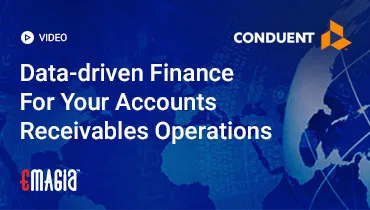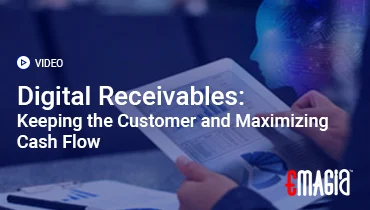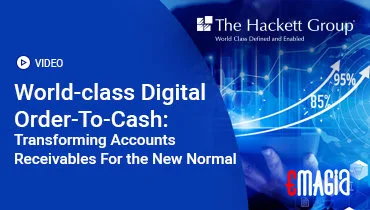In the intricate web of global commerce, Business-to-Business (B2B) payments form the invisible backbone that keeps industries moving. Unlike consumer transactions, which are often immediate and standardized, B2B payments frequently involve complex relationships, diverse payment methods, and significant transaction volumes. While the digital transformation has streamlined many aspects of business, the journey of money from one company to another remains fraught with unique hurdles that can impact cash flow, operational efficiency, and even business relationships.
For finance leaders, treasury professionals, and accounts receivable teams, understanding “what are the challenges in B2B payment processing” is not just an academic exercise; it’s a daily reality. These challenges, if left unaddressed, can lead to delayed payments, increased operational costs, higher instances of unapplied cash, and friction in vital customer and supplier partnerships. From fragmented data to stringent security requirements, the B2B payment landscape presents a maze of complexities that demand strategic navigation.
This comprehensive guide will meticulously explore the multifaceted obstacles that businesses encounter when processing payments between organizations. We will delve into common pain points such as manual processes, data reconciliation complexities, fraud concerns, and the intricacies of cross-border transactions. By shining a light on these hurdles, this article aims to equip businesses with the knowledge to identify, understand, and ultimately overcome the most pressing challenges in B2B payment processing, paving the way for smoother, more efficient, and more secure financial operations.
The B2B Payment Landscape: A World Apart from B2C
To understand the challenges, it’s vital to first distinguish the unique characteristics of payments between businesses.
Key Differences: B2B vs. B2C Payments
While both involve the exchange of money for goods or services, B2B payments differ significantly from Business-to-Consumer (B2C) transactions:
- Complexity: B2B payments often involve larger sums, more detailed invoices with multiple line items, and complex contracts.
- Payment Terms: B2B transactions frequently use credit terms (e.g., Net 30, Net 60), meaning payment is deferred, unlike the immediate payment common in B2C. This introduces the challenge of managing accounts receivable.
- Payment Methods: B2B uses a wider array of payment methods, including ACH transfers, wire transfers, corporate checks, virtual cards, and even specialized platforms, in addition to credit cards.
- Relationship Focus: B2B relationships are typically long-term and built on trust and mutual benefit, making customer experience in payments crucial.
- Data Requirements: B2B payments require extensive remittance data (invoice numbers, discounts, deductions) for accurate reconciliation, far more than a typical B2C receipt.
These distinctions are the root cause of many of the unique challenges in B2B payment processing.
Primary Challenges in B2B Payment Processing
From manual bottlenecks to complex data, these are the most significant hurdles faced by businesses.
1. Manual Processes and Human Error: The Efficiency Drain
Despite technological advancements, many businesses still rely on heavily manual processes for managing B2B payments. This includes manually matching incoming payments to invoices, keying in remittance data, and reconciling bank statements. This reliance on human intervention introduces numerous problems:
- Time Consumption: Manual tasks are incredibly time-consuming, diverting valuable finance team resources from more strategic activities. This directly impacts how efficient your business payment processing can be.
- High Error Rates: Manual data entry is prone to human error, leading to misapplied payments, incorrect balances, and reconciliation nightmares. These errors are a significant source of frustration in corporate payment processing.
- Delayed Cash Application: The slower pace of manual processing means that cash isn’t applied to customer accounts promptly, inflating Days Sales Outstanding (DSO) and delaying accurate cash visibility.
The persistence of manual steps is a critical factor impacting the efficiency of B2B payment solutions adoption.
2. Complex Payment Methods and Varied Terms: A Jigsaw Puzzle
The sheer diversity of B2B payment methods and terms creates a complex jigsaw puzzle for finance teams:
- Multiple Payment Rails: Businesses accept everything from paper checks (still surprisingly common for B2B payments via check) and ACH transfers to wire transfers, virtual cards, and specialized B2B payment networks. Each method has its own fees, processing times, and data formats.
- Extended Payment Terms: Credit terms like Net 30, Net 60, or even Net 90 are standard. This means managing payment due dates, credit limits, and collection efforts across a vast array of customers with different agreements. This complexity adds to the B2B payment processing challenges.
- Discounts and Deductions: B2B invoices often involve early payment discounts, volume-based rebates, or complex deductions for returns, marketing allowances, or shipping discrepancies. Accurately applying these during payment reconciliation is a major headache.
Managing this varied landscape demands flexible and intelligent B2B payment solutions.
3. Data Reconciliation and Unapplied Cash: The Hidden Cost
One of the most persistent and costly challenges in B2B payment processing is the difficulty of data reconciliation. This often leads to “unapplied cash” – payments received by a business that cannot be matched to specific invoices or open receivables. The reasons for this are varied:
- Poor Remittance Data: Customers often send payments without clear remittance advice, or the advice is sent separately or contains insufficient detail (e.g., just an amount, no invoice numbers). This is a common pain point for B2B payment solutions.
- Partial Payments: Customers paying only a portion of an invoice due to disputes, deductions, or cash flow issues, making matching difficult.
- Lack of Integration: Disparate systems for invoicing, banking, and Accounts Receivable mean data isn’t seamlessly shared, requiring manual intervention for matching.
Unapplied cash ties up capital, inflates DSO, and requires significant manual effort to resolve, directly impacting B2B payment efficiency.
4. Fraud and Security Concerns: A Constant Threat
The high value and volume of B2B transactions make them prime targets for various types of fraud. Ensuring the security of B2B payment methods is a constant, evolving challenge:
- Payment Fraud: Unauthorized transactions, fake invoices, or manipulation of payment instructions.
- Data Breaches: Protecting sensitive financial and customer data from cyberattacks. Compliance with standards like PCI DSS is essential, but ongoing vigilance is key.
- Insider Threats: Risk of fraud from within the organization.
Implementing robust security protocols and monitoring systems is crucial for trustworthy corporate payment processing.
5. Cross-Border Payments and Currency Complexities: Navigating Global Waters
For businesses engaged in international trade, cross-border B2B payments introduce additional layers of complexity:
- Currency Conversion: Managing multiple currencies, exchange rate fluctuations, and associated fees.
- International Regulations: Adhering to diverse regulatory requirements in different countries (e.g., AML/KYC, data privacy laws).
- Varying Payment Rails: Navigating different local payment networks and banking systems, which can impact speed and cost.
- Longer Settlement Times: International wire transfers or other cross-border B2B payment solutions can take longer to settle.
These factors make global business payment processing particularly challenging.
6. Integration with Existing Systems: The IT Headache
Many large businesses operate with legacy ERP (Enterprise Resource Planning) systems, accounting software, and specialized AR modules that may not seamlessly integrate with modern B2B payment solutions. This creates silos and data fragmentation:
- Siloed Data: Information trapped in disparate systems prevents a holistic view of accounts receivable and cash flow.
- Custom Integrations: Building bespoke integrations is costly, time-consuming, and requires ongoing maintenance.
- Resistance to Change: Overcoming organizational inertia and adopting new technologies can be a significant hurdle.
Achieving a truly unified B2B payment processing system often requires overcoming these integration challenges.
7. Regulatory Compliance and Evolving Standards: Staying Legally Sound
The regulatory landscape for financial transactions is constantly evolving. Businesses must ensure their B2B payment processing adheres to a myriad of rules and standards:
- PCI DSS: For handling card data.
- Anti-Money Laundering (AML) / Know Your Customer (KYC): Preventing illicit financial activities.
- Data Privacy Laws: (e.g., GDPR, CCPA) for handling customer and payment data.
- Industry-Specific Regulations: Additional rules depending on the sector (e.g., healthcare, financial services).
Non-compliance can lead to severe penalties, fines, and reputational damage, making it a critical concern for any corporate payment processing strategy.
8. Customer Expectations for B2B Payments: The B2C Effect
Today’s B2B customers are increasingly bringing their B2C payment expectations into the corporate realm. They expect convenience, speed, and digital self-service options:
- Digital Portals: Demand for online portals where they can view invoices, apply credits, and make payments seamlessly.
- Multiple Payment Options: Expectation of a wide array of payment methods beyond just checks.
- Real-time Updates: Desire for immediate confirmation of payments and clear status updates.
Meeting these evolving expectations while maintaining internal efficiency is a growing challenge for B2B payment solutions.
Overcoming Challenges in B2B Payment Processing: Solutions and Strategies
Addressing these multifaceted challenges requires a strategic blend of technology, process optimization, and a customer-centric approach.
1. Embrace Automation and AI for B2B Payment Efficiency
Automating repetitive tasks is the most impactful way to overcome manual process inefficiencies. Look for solutions that offer:
- Automated Cash Application: AI-powered engines that automatically match payments to invoices, even with unstructured remittance data, drastically reducing unapplied cash.
- Automated Reconciliation: Systems that automatically reconcile bank statements and payment records.
- Automated Dunning: Scheduled reminders and follow-ups for overdue payments.
This transforms corporate payment processing from a labor-intensive task to a streamlined operation.
2. Digitize Payment Methods and Encourage Adoption
Transitioning from paper-based to electronic B2B payment methods is crucial. Encourage the use of:
- ACH Payments: Low-cost and reliable for recurring or large B2B transfers.
- Virtual Credit Cards: Enhanced security and reconciliation data.
- Online Payment Portals: Provide a secure, self-service environment for customers to view invoices and make payments, improving B2B payments via check alternatives.
Offering diverse and digital B2B payment solutions improves conversion and reduces manual handling.
3. Implement Robust Data Extraction and Normalization
To combat poor remittance data, invest in solutions that can automatically extract, interpret, and normalize data from various sources (emails, PDFs, EDI). AI and machine learning are particularly effective here, enabling accurate reconciliation even with incomplete information, addressing a major B2B payment processing challenge.
4. Strengthen Security and Fraud Prevention
Adopt a multi-layered approach to security:
- PCI DSS Compliance: Ensure all payment systems and processes meet the highest security standards.
- Fraud Detection Tools: Implement real-time monitoring, anomaly detection, and authentication protocols.
- Employee Training: Educate staff on fraud prevention best practices.
Proactive security measures are vital for trustworthy business payment processing.
5. Centralize and Integrate Payment Operations
Break down data silos by investing in an integrated B2B payment processing system. A unified platform that connects your ERP, AR, Treasury, and banking systems provides end-to-end visibility and control over all financial transactions, simplifying cross-border B2B payments and domestic ones alike.
Emagia: Revolutionizing B2B Payment Processing with AI-Powered Order-to-Cash
In the complex landscape of B2B commerce, navigating the myriad challenges in B2B payment processing is a formidable task that often hinders cash flow and operational efficiency. While many point solutions exist, true transformation requires a holistic, intelligent approach. This is precisely where Emagia’s AI-powered Order-to-Cash (O2C) platform delivers unparalleled value, revolutionizing how businesses manage their entire payment and collection lifecycle.
Emagia’s comprehensive platform directly addresses the core challenges in B2B payment processing by automating and optimizing every step from order placement to cash application. Our intelligent capabilities significantly enhance B2B payment efficiency by:
- Automated Cash Application and Reconciliation: Emagia’s industry-leading AI cash application engine virtually eliminates manual reconciliation, which is a major source of unapplied cash. It automatically ingests and intelligently matches payments (from checks, ACH, wires, virtual cards, etc.) to invoices, even with complex or unstructured remittance data. This speeds up cash application from days to minutes, directly tackling a key B2B payment processing challenge.
- Intelligent Collections Management: Our AI-driven collections module prioritizes overdue accounts and automates personalized dunning communications across multiple channels. This proactive approach accelerates collections, reduces Days Sales Outstanding (DSO), and minimizes the need for costly manual follow-ups, directly impacting the speed and recovery of your business payment processing.
- Advanced Dispute Resolution: Emagia streamlines the identification, collaboration, and resolution of payment disputes, which often lead to delayed or unmatched payments. By facilitating quicker dispute resolution, we ensure faster cash realization and improve the accuracy of your corporate payment processing.
- Comprehensive Digital Payment Acceptance: While Emagia doesn’t directly process payments, it integrates seamlessly with various B2B payment solutions (like payment gateways and ACH processors). It also offers Electronic Bill Presentment and Payment (EBPP) portals that encourage customers to pay digitally, reducing reliance on manual B2B payments via check and providing rich remittance data for easier reconciliation.
- Real-time Visibility and Analytics: Emagia provides a unified, real-time view of all your receivables, cash positions, and payment activities across global operations. This enhanced cash flow visibility empowers finance teams with data-driven insights to make proactive decisions, optimize working capital, and navigate the complexities of cross-border B2B payments with greater confidence.
- Seamless Integration: Designed for modern enterprises, Emagia’s platform integrates effortlessly with your existing ERP, CRM, and banking systems, eliminating data silos and creating a single source of truth for all payment-related information, overcoming a major B2B payment processing system hurdle.
By leveraging Emagia, businesses move beyond merely addressing challenges in B2B payment processing to truly transforming their entire financial operations. This holistic, AI-powered approach ensures superior cash flow, reduced operational costs, enhanced compliance, and a significantly improved payment experience for both your business and its customers.
Frequently Asked Questions (FAQs) About B2B Payment Processing Challenges
What are the challenges in B2B payment processing compared to B2C?
The challenges in B2B payment processing are more complex than B2C due to several factors: B2B payments involve larger transaction values, typically use deferred payment terms (e.g., Net 30), rely on a wider variety of payment methods (checks, ACH, wires, virtual cards), require more detailed remittance data for reconciliation, and often involve longer-term customer relationships. These complexities lead to unique hurdles in efficiency, reconciliation, and compliance compared to consumer transactions.
Why do manual processes pose such a significant challenge in B2B payment processing?
Manual processes pose a significant challenge in B2B payment processing because they are highly time-consuming, prone to human error, and cause delays. Manually matching incoming payments to invoices, keying in remittance data, and reconciling bank statements ties up valuable finance team resources. These inefficiencies lead to misapplied payments, increased ‘unapplied cash,’ inflated Days Sales Outstanding (DSO), and delayed cash visibility, hindering overall ‘B2B payment efficiency’.
How does ‘unapplied cash’ become a major challenge for corporate payment processing?
‘Unapplied cash’ becomes a major challenge for corporate payment processing when payments are received but cannot be accurately matched to specific invoices due to poor or missing remittance data. This leads to funds sitting unallocated, artificially inflating Accounts Receivable balances, distorting cash flow visibility, and requiring significant manual effort to investigate and reconcile. It directly impacts a business’s liquidity and operational effectiveness in its ‘B2B payment solutions’.
What are the common security and fraud concerns in B2B payment methods?
Common security and fraud concerns in B2B payment methods include various types of payment fraud (e.g., fake invoices, manipulated payment instructions), risks of data breaches compromising sensitive financial information, and potential insider threats. Given the high value and volume of B2B transactions, protecting against these threats requires robust encryption, strict PCI DSS compliance, advanced fraud detection tools, and continuous vigilance across the ‘B2B payment processing system’.
What makes cross-border B2B payments particularly challenging?
Cross-border B2B payments are particularly challenging due to complexities like currency conversion and fluctuating exchange rates, adherence to diverse international regulatory requirements (e.g., AML/KYC), navigating different local payment networks and banking systems, and often longer settlement times. These factors add layers of cost, risk, and operational complexity compared to domestic ‘business payment processing’.
How do outdated systems create B2B payment processing challenges?
Outdated systems create B2B payment processing challenges primarily through a lack of seamless integration. Legacy ERPs, accounting software, and specialized AR modules often don’t communicate effectively with modern ‘B2B payment solutions’. This results in siloed data, manual data entry, and fragmented workflows, leading to inefficiencies, errors, and a lack of real-time visibility into financial operations. Overcoming these integration hurdles is key for a unified ‘B2B payment processing system’.
How are evolving customer expectations impacting B2B payments?
Evolving customer expectations are significantly impacting B2B payments as businesses now expect B2C-like convenience and digital self-service. They increasingly demand online payment portals to view invoices and make payments, a wider array of digital payment options beyond just ‘B2B payments via check’, and real-time payment confirmations. Meeting these demands while maintaining internal efficiency and compliance presents a growing challenge for businesses that need modern ‘B2B payment solutions’.
Conclusion: Navigating the Future of B2B Payments with Strategic Solutions
The landscape of B2B payment processing is undeniably complex, fraught with challenges ranging from deeply entrenched manual processes and data reconciliation headaches to the ever-present threats of fraud and the intricacies of global transactions. Understanding “what are the challenges in B2B payment processing” is the critical first step towards transforming these hurdles into opportunities for financial agility and operational excellence.
We’ve dissected the multifaceted obstacles that impede B2B payment efficiency, highlighting how factors like diverse payment methods, unapplied cash, and fragmented systems can significantly impact a business’s cash flow and bottom line. Yet, as we’ve also seen, these challenges are not insurmountable. By strategically embracing automation, digitizing payment methods, ensuring robust security, and investing in integrated solutions, businesses can navigate this complexity with confidence.
Ultimately, transforming your B2B payment processing system is about more than just efficiency; it’s about building a resilient financial backbone that supports sustainable growth, fosters stronger customer relationships, and minimizes risk. By proactively addressing these challenges with modern B2B payment solutions, businesses can unlock smoother, faster, and more secure financial operations, truly empowering their place in the global economy.



